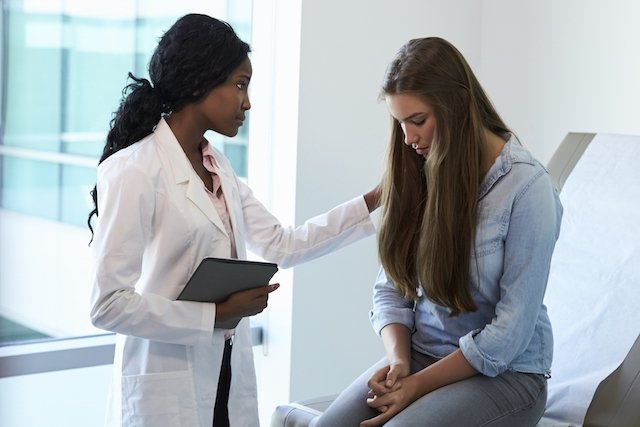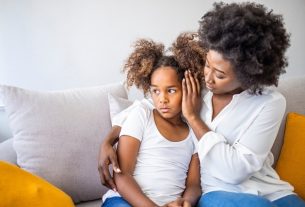Treatment to stop using drugs must be started when a person has a chemical dependency that puts their life at risk and causes harm to themselves and their families and involves the use of medication and psychotherapy.
Ideally, the person wants to stop using the drug and seek treatment, as willpower is very important for the healthcare team and family members to be able to help overcome chemical dependency.
In this way, treatment can be carried out at the Psychosocial Support Centers (CAPS) or with hospitalization in a specialized clinic, which guarantees that during this period there is no contact with any drug. Hospitalization can be partial, that is, only during the day, or full, where the person only leaves when they have completely recovered.

When is indicated
Treatment to stop using drugs is indicated for people who use drugs that cause physical and/or psychological dependence, such as:
- Cocaine;
- Heroin;
- Crack;
- Amphetamines;
- Opioids;
- Marihuana;
- Ecstasy;
- Ketamine.
Hospitalization to treat chemical dependency on drugs can happen voluntarily, when the person themselves wants to start treatment, or it can be involuntary, also called compulsory hospitalization, when family members make a request to the doctor to hospitalize the person against your will.
This compulsory hospitalization is carried out especially when there is a high risk to the life of the person and those around them, however, involuntary hospitalizations have been less and less recommended and used.
Clinics specializing in the treatment of chemical dependency can also help in the treatment of alcohol abuse, but in this case there are also other institutions aimed at those who consume alcoholic beverages and even support groups in the community, known as Alcoholics Anonymous, for example. See how alcohol abuse treatment is carried out.
What is the treatment process like?
During hospitalization at the specialized clinic, the team of professionals works together to find the best combination of treatment for each case and, therefore, the process can change from one person to another. However, some of the most commonly used forms of treatment include:
1. Drug Remedies
Medicines to treat drug addiction should only be used under supervision, 24 hours a day, 7 days a week, so that the person can carry out the treatment correctly and reduce withdrawal symptoms.
Initially, to combat the “craving”, which is the imminent desire to use the drug, anxiolytics and antidepressants can be used, for example.
Drug addiction remedies vary depending on the drug that is causing the disease:
- Marihuana: Fluoxetine and Buspirone, which try to reduce withdrawal symptoms;
- Cocaine: Topiramate and Modafinil, for example, although there are several medications that can be used;
- Crack: Risperidone, Topiramate or Modafinil, which try to alleviate withdrawal symptoms;
- Heroin: Methadone and Naloxone, which act in the brain, altering the reward and pleasure system.
In addition to these, it is common for other antibiotic and antiviral medications to be recommended to combat health problems that the user may have, such as tuberculosis, pneumonia, HIV or syphilis, for example.
2. Therapy with a psychologist or psychiatrist
Although family support and help is very important and a fundamental part of drug addiction treatment, monitoring by a psychologist or psychiatrist is also essential to help stop using drugs.
Psychotherapy offers useful tools so that the person can avoid contact with and use drugs, as well as helping the family, who learn how to live together and help the person continue treatment.
Furthermore, when a person stops using drugs, they go through a period of abstinence in which they face strong feelings of anxiety and various emotional disorders and, therefore, it is important to ensure that there is psychological support, so that the person can manage their emotions well. , without having to resort to drugs.
3. Changing behaviors
Another important factor in combating chemical dependency on drugs is changing behavior, as the person’s social reality often makes them want to consume drugs, such as meeting some friends who use drugs and going to places where they used drugs.
To reduce the risk of relapse, the person needs to be guided to change their lifestyle.
In addition, contact with even milder drugs and alcoholic beverages should be avoided, as they also increase the risk of relapse.
4. Drug use in controlled locations
Not always viewed favorably, another form of treatment consists of consuming the drug in a specialized location, where the necessary utensils are provided so that consumption does not lead to the emergence of illnesses.
These places are generally available in other countries, but the person does not stop using drugs, nor do they start using smaller doses, they just consume them in a clean place, where they can receive immediate medical assistance if they overdose.
Where to Find Free Drug Treatment
It is possible to access free treatment in several locations across the country, but places are limited. Anyone wishing to be hospitalized to treat drug addiction should first seek advice from their family doctor, who will recommend institutions that can help with the treatment.
Os Psychosocial Care Centers – CAPS are an example of government institutions that help with drug treatment. These centers are open all day every day and are staffed by a team made up of general practitioners, psychiatrists, psychologists, nurses and social workers.
Monitoring of dependents in these centers is daily and allows the individual to feel capable of working and leisure again, thus strengthening their mental health.
One of the many advantages of psychosocial care centers is replacing the patient’s need for hospitalization, integrating them into their own treatment by making them responsible for going to the CAPS in their municipality every day.
How long does recovery take
It is necessary to monitor the individual for at least 6 months, and the person’s follow-up time may take from 1 to 5 years, depending on adherence to the individual treatment plan.
In the first 6 months, the treatment team tries to make the person completely drug-free, always working on different aspects to avoid a relapse, and so that the person can rebuild their life. In the following months, the monitoring aims to strengthen new attitudes and empowerment.
After this period, the person may have a relapse, but the important thing is to persevere and continue with the treatment. Sometimes, the person will still need follow-up, having 2 or 3 consultations per year, over a long period.





